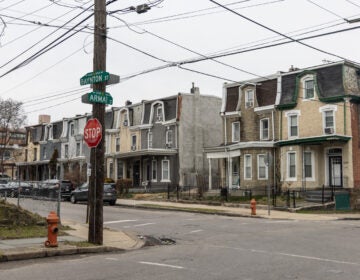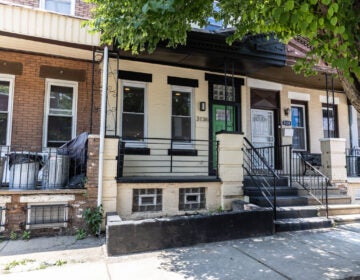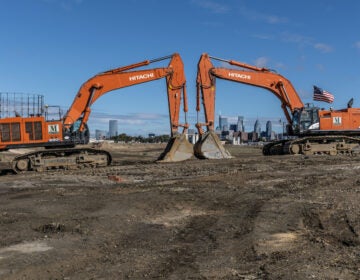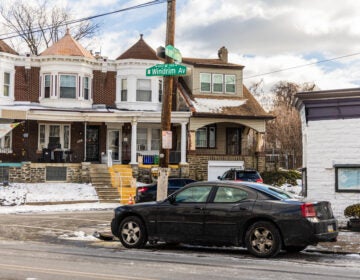‘It’s absolutely changing’: Pew finds Philly is less affordable than it used to be
Researchers analyzed nearly 700,000 records of home sales in the city from 2000 through 2021.
Listen 1:13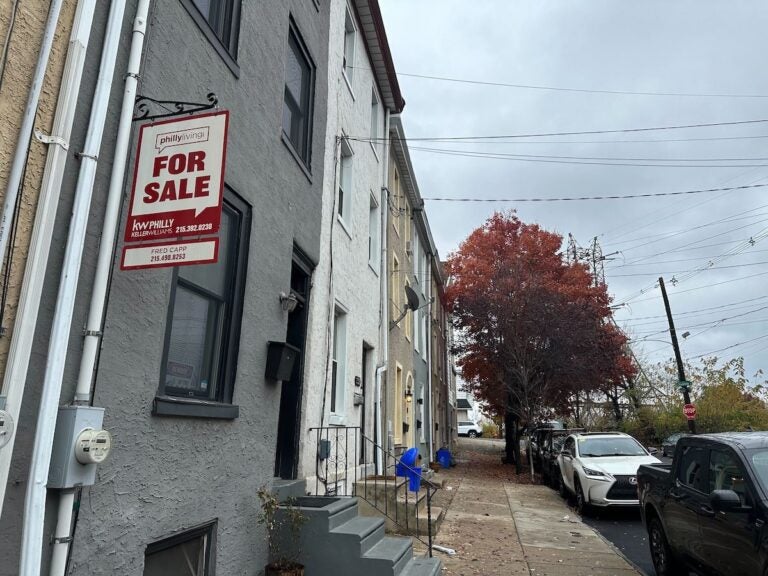
A single-family home in the East Falls neighborhood in Philadelphia in 2023. (Kristen Mosbrucker-Garza/WHYY)
Have a question about Philly’s neighborhoods or the systems that shape them? PlanPhilly reporters want to hear from you! Ask us a question or send us a story idea you think we should cover.
New research shows Philadelphia remains a city of homeowners but is less affordable than it’s historically been — over the last few years but also over the past two decades — even as the number of homeowners remained virtually unchanged.
“The affordability of the city’s market is changing. It’s absolutely changing,” said Octavia Howell, a manager with the Philadelphia Research and Policy Initiative of the Pew Charitable Trusts.
While the median sale price for an entry-level home decreased between 2021 and 2023, the median monthly mortgage payment for those homes increased as a result of higher interest rates, according to a report Pew released Tuesday.
In 2021, the median mortgage payment was $944. Two years later, the total had risen by nearly a third, to $1,213.
The jump is part of a broader trend that has made Philadelphia a tougher place to buy a home, particularly for people with low and moderate incomes.
In 2000, low-cost homes — priced at $100,000 or less — accounted for about half of all transactions made by so-called “traditional” purchasers. These are people who used a mortgage to buy a home.
By 2021, that figure had plummeted to 3%.
During the same span, more expensive homes — priced at $400,000 or more — rose from 3% of all transactions to 23%.
“We did see an increase in high-income borrowers in the city of Philadelphia compared to 2000,” said Howell.
These trends appear to be impacting who can access homeownership.
According to the report, the number of Asian borrowers rose 157% between 2000 and 2021. During the same period, the number of Hispanic borrowers increased 48% while the number of white borrowers increased by 8%.
The city’s Black population had fewer borrowers, however. The number of mortgages issued dropped 25% during a time when the number of Black residents in the city remained relatively unchanged.
“One of the things we were interested in this research is understanding how the market changes were impacting individuals, and there’s this question of, ‘Are people continuing to be able to access the market?’ And for Black households in particular, the answer seems to be not quite so much,” said Howell.
The Pew report does not delve into the reasons why. It does note that the number of Black residents applying for a mortgage dropped 64% between 2005 and 2019 — more than any other racial or ethnic group, according to an analysis by the Delaware Valley Regional Planning Commission.
Lenders offering conventional mortgage loans have historically favored white applicants over Black applicants. A report published by the Federal Reserve Bank of Philadelphia in 2021 found that Black mortgage applicants were nearly three times more likely to be denied by lenders than white applicants that year.
Many Black applicants were rejected because of their credit history. Researchers have also traced the disparity to low credit scores, debt-to-income ratio and the lingering impacts of redlining. The discriminatory practice dates back to the 1930s and saw mortgage lenders deny loan requests based on race.
Courtney Johnson Rose, president of the National Association of Real Estate Brokers, said all of those factors have diminished consumer confidence among Black households, particularly when layered on top of a tight housing market.
While they may not know the reasons why more Black mortgage applicants are denied, Black consumers do know it’s more challenging for them to get a home loan, said Rose.
“All you know is, ‘This is harder for me to go to the bank to get approved and to get a home.’ What you do know as a Black consumer is, ‘I don’t see a lot of my family, friends, colleagues that look like me also doing this,’” she said.

Subscribe to PlanPhilly
WHYY is your source for fact-based, in-depth journalism and information. As a nonprofit organization, we rely on financial support from readers like you. Please give today.




